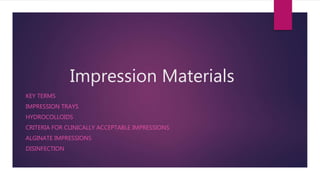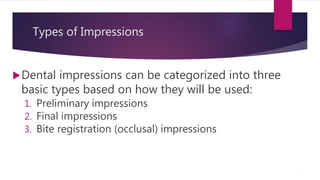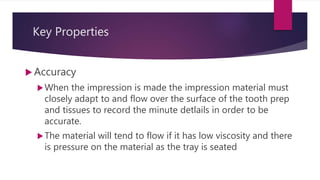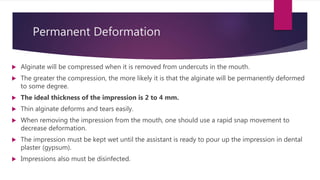Impression materials such as alginate and hydrocolloids are used to make negative reproductions of teeth and oral structures to create study models, dies, and prosthetics. Alginate is the most commonly used impression material due to its low cost, ease of use, and accuracy for preliminary impressions and diagnostic models, though it lacks the fine detail needed for final restorations. The selection of impression material depends on the intended use, with alginate and hydrocolloids being inexpensive preliminary options and elastomers like polyvinyl siloxane and polyether used for final impressions.















































